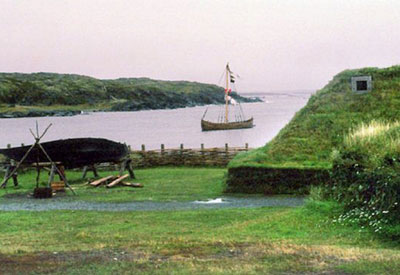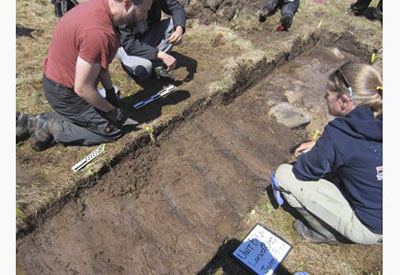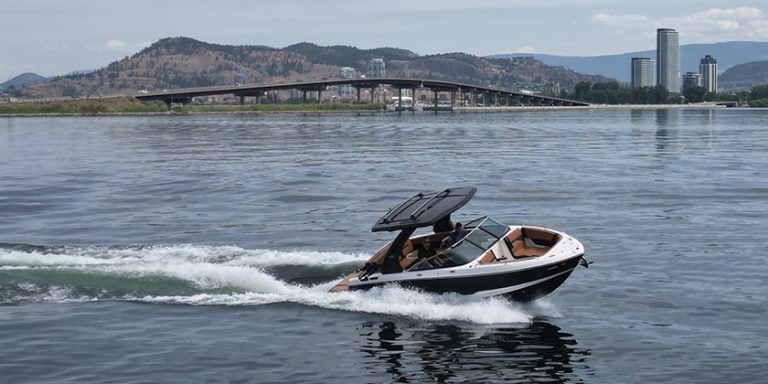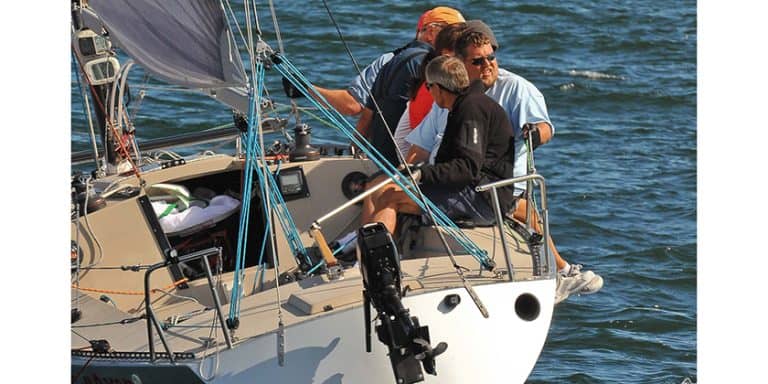Archeological Find Suggests New Site for Vikings in Newfoundland

Photo: To date, the only verified European settlement in North America is at L’Anse aux Meadows, on the tip of Newfoundland’s Great Northern Peninsula. Credit: Paul Northcott April 11 2016
The only known Norse site in the New World is the 1,000-year-old seaside settlement L’Anse aux Meadows. A view from space has revealed what may well turn out to be another.
The ancient chronicles told of a larger-than-life Viking warrior with a shock of red hair, banished from his home for killing another man, who sailed with hundreds of followers to an icy island in the sea. And they told of his son, who set out only a few years later to an even more distant place he knew as “Vinland,” but which today’s historians believe were the eastern coasts of modern day Canada and the United States.
The Icelandic Sagas are thrilling narratives, full of swashbuckling exploration, epic feuds, dazzling romances and poignant betrayals.
Still, they are only stories, told hundreds of years after the fact by poets with a penchant for embellishment.
To date, the sagas have led archeologists to only one actual, verified Norse historical site in the New World: L’Anse aux Meadows, the 1,000-year-old seaside settlement on the northernmost tip of Newfoundland.
It would take a view from space to track down what may well turn out to be another.
The new archeological find, announced Thursday, offers tantalizing evidence of a Viking presence about 500 km from the only place in Canada they’d ever been confirmed to have inhabited before.
 Photo: Sarah Parcak, right, and Douglas Bolender look for evidence of a Viking presence in Point Rosee, Newfoundland. If confirmed, the site would be the second known Viking settlement in North America. Credit: GREG MUMFORD / NYTIt doesn’t look like much: a fire-cracked stone and some mangled scraps of iron unearthed from a muddy patch of ground called Point Rosee.
Photo: Sarah Parcak, right, and Douglas Bolender look for evidence of a Viking presence in Point Rosee, Newfoundland. If confirmed, the site would be the second known Viking settlement in North America. Credit: GREG MUMFORD / NYTIt doesn’t look like much: a fire-cracked stone and some mangled scraps of iron unearthed from a muddy patch of ground called Point Rosee.
Lead archeologist Sarah Parcak says the site is almost certainly one of two things: “Either it’s . . . an entirely new culture that looks exactly like the Norse and we don’t know what it is,” she told The Washington Post in a phone interview. “Or it’s the westernmost Norse site that’s ever been discovered.”
Although her team is seeking definitive evidence — further excavations and analysis are required to prove that the site didn’t come from some other community — Parcak is feeling more and more optimistic that the latter possibility is the right one.
If her faith is borne out, researchers say that the discovery, which is the subject of a two-hour documentary that will air on PBS next week, has the potential to rewrite the history of the Vikings in North America.
It might confirm the belief that the Norse presence here was fleeting, just another short-lived expedition by a seafaring society.
{videobox}EJ11Khg4qyU{/videobox}
Parcak hopes to keep scanning from the skies for other signs of settlements; meanwhile, she and her colleagues will return to Point Rosee this summer to continue their excavations.
The archeologists are careful to hedge when they discuss Point Rosee and its implications. Parcak acknowledges there isn’t yet a “smoking gun” that absolutely confirms the site as Norse (in L’Anse Aux Meadows, archeologists uncovered a bronze fastening pin and an iron smithy, among other things).
“This is going to take years of careful excavation, and it’s going to be controversial,” she said. “It raises a lot more questions than it answers.”
“But that’s what any new discovery is supposed to do.”
Original article courtesy Sarah Kaplan The Washington Post, Published on Fri Apr 01 2016




























